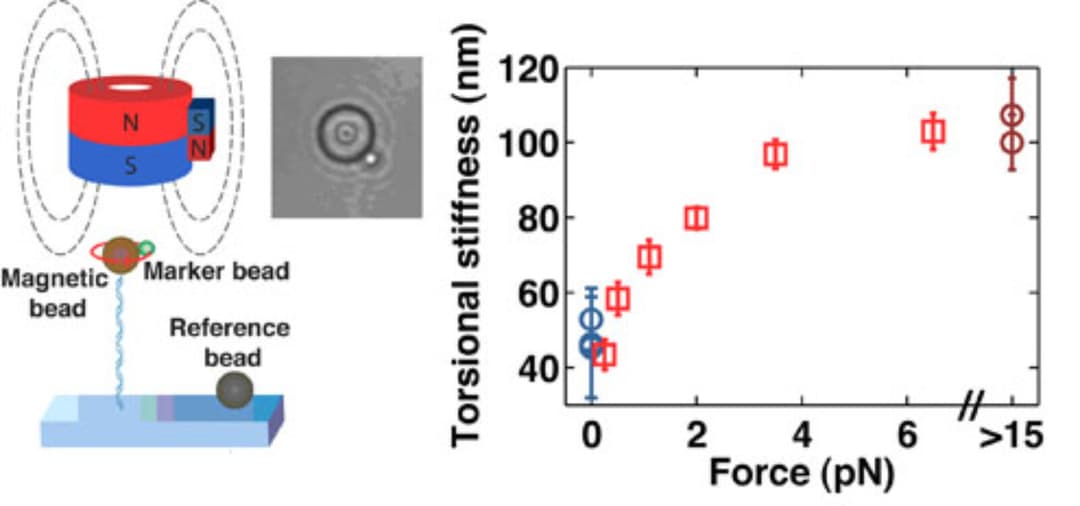A New Instrument Puts A Twist On DNA

(Originally published by the Delft University of Technology)
October 29, 2010
Scientists at the Kavli Institute of Nanoscience at the Delft University of Technology have developed a new instrument for measuring the extent to which individual DNA molecules resist twisting. This provides greater insight into the function of DNA molecules, in copy and repair processes, for example. The study, headed by Jan Lipfert and Nynke Dekker, was published on the 'Nature Methods' website.
The new instrument, known as magnetic torque tweezers, can be used to measure the torsional stiffness of DNA. In the tweezers, a single DNA molecule is tethered between a glass cover slip and a small magnetic bead. Magnets are then used to exert forces and torques on the DNA molecule. The magnetic bead´s position and rotation are recorded, using a video microscope. Measurements of the bead´s motion are used to measure the torsional stiffness of the DNA molecule. This new instrument has shown that the torsional stiffness of DNA depends on the stretching force applied to the molecule, and that its stiffness increases when repair proteins bind to DNA.

DNA´s torsional stiffness derives from its molecular structure. DNA consists of two long strands that are bound together at intervals along their length. These strands wind around one another like a miniature spiral staircase. This has major biological implications. When DNA is being copied or repaired, it rotates like a braided rope that is being unravelled. This generates torques in the DNA.
Nanostructures
A better understanding of DNA´s material properties (such as its torsional stiffness) is important for many reasons, for instance it could be useful in the construction of future nanostructures based on DNA. This knowledge will also be used to better understand the action of “molecular motors” on DNA. An example of a molecular motor is DNA polymerase, which transforms single-stranded DNA to double-stranded DNA.
Dr. Lipfert's research is co-funded by the Foundation for Fundamental Research on Matter (FOM) and by a VENI (Innovational Research Incentives Scheme) grant from the Netherlands Organisation for Scientific Research (NWO).